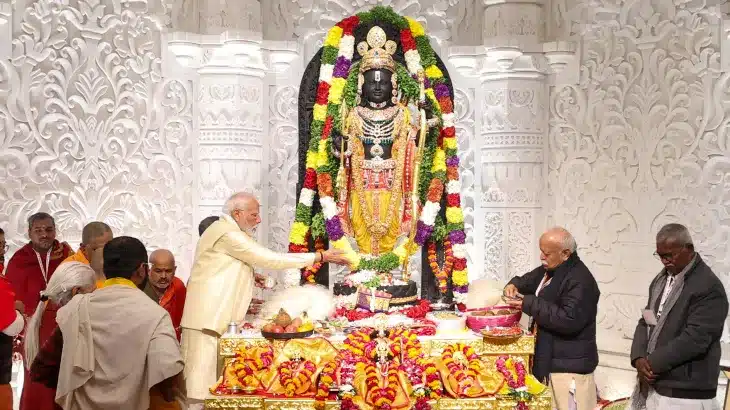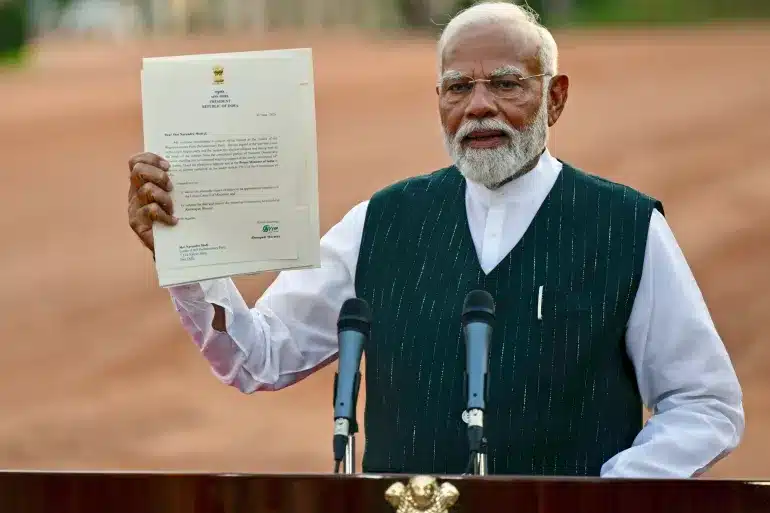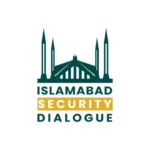The fall of Bharatiya Janata Party (BJP) in the 2024 Indian Lok Sabha elections has revealed a significant decline in Prime Minister Narendra Modi’s popularity. Despite winning absolute majorities in the 2014 and 2019 elections with 282 and 303 seats respectively, the BJP secured only 240 seats in 2024, falling short of a simple majority.
The results of Lok Sabha Elections 2024 defied exit poll forecasts and underscored the waning support for Modi’s policies and rhetoric, including his focus on divisive issues like the Ram Mandir and the Citizenship Amendment Act (CAA).
Decline in Modi’s Support and the Fall of Bharatiya Janata Party (BJP)
In the wake of the elections, Modi’s diminished popularity was evident. The BJP’s significant loss, despite its aggressive campaign slogan “Is baar 400 paar” (This time, we will cross 400), highlighted a clear voter backlash against the Prime Minister’s tactics. Modi’s emphasis on inaugurating the Ram Mandir and implementing the CAA was intended to consolidate the Hindu vote. However, these strategies backfired, failing to garner the expected support. This election marked a pivotal moment where the electorate’s patience with Modi’s polarizing methods appeared to have worn thin, reflecting a broader rejection of his divisive politics, particularly those impacting minority communities.
Also See: A Decade of Modi: India’s Democratic and Diplomatic Conundrum
Failures in Key Regions and Among Key Demographics
The BJP’s setbacks were pronounced in key regions and among various demographic groups. In Faizabad, Uttar Pradesh, home to the Ram Mandir, the BJP’s defeat was a significant blow. Despite the monumental inauguration of the Ram Mandir at the Babri mosque site, which was desecrated in 1992, the BJP could not win over the local populace. This indicated a broader rejection of Modi’s Hindutva rhetoric.

The BJP failure to win Faizabad, despite the party’s significant efforts, underscored the diminishing appeal of using religious nationalism as a political tool.
The BJP’s policies also alienated religious minorities. Violence against Christians in Manipur contributed to the party’s poor performance in the region, where the Congress emerged victorious. Modi’s anti-Muslim policies, including the CAA and the Ram Mandir project, backfired, reflecting a public unwillingness to accept such divisive tactics. These results demonstrated a significant shift in voter sentiment, with minority communities rallying against the BJP’s exclusionary policies.
Youth and Economic Concerns Contributed to the Fall of Bharatiya Janata Party (BJP)
Youth disillusionment played a critical role in the BJP’s setbacks. The young electorate, frustrated by joblessness, inflation, and controversial schemes like the Agnipath scheme for army recruitment, turned away from Modi. The Agnipath scheme, which reformed the recruitment process for the armed forces, was particularly controversial and failed to address the employment concerns of the youth. This demographic, which had once been a significant supporter of Modi, felt neglected and misled by the government’s promises of economic revival and job creation.
Economic concerns further amplified the electorate’s dissatisfaction. Modi’s inability to effectively address inflation and unemployment undermined his support base. The BJP’s governance failures, coupled with the economic downturn, eroded the trust and confidence of voters.
Vote for Resistance
The BJP’s losses were not confined to Uttar Pradesh. In states like Tamil Nadu, Manipur, and Punjab, the party failed to secure any seats, highlighting a broader decline in its strongholds.
The opposition coalition, the Indian National Developmental Inclusive Alliance (INDIA), capitalized on these weaknesses, effectively countering Modi’s divisive rhetoric. The INDIA alliance’s promises of inclusive governance resonated with voters, particularly in regions where the BJP’s policies had caused significant unrest.
The abrogation of Article 370 and the BJP’s claims of normalcy and development in Indian Illegally Occupied Jammu and Kashmir (IIOJK) were challenged by their withdrawal from contesting elections and the victory of figures like Engineer A. Rasheed who is in Jail under the charges of terror funding. The electorate in Indian Illegally Occupied Jammu and Kashmir (IIOJK), as well as Sikhs in Punjab, who supported figures like Amritpal Singh and Sarabjeet Khalsa, opted for resistance over BJP’s development rhetoric.
Violence against Christians in Manipur also cost BJP Lok Sabha polls where Congress surfaced victorious. Hindus have also rejected the politics of Hindutva by Modi, Uttar Pradesh being a Hindu majority state rejected the Hindu radical party. This indicated a broader regional dissatisfaction with the BJP’s approach to governance and its handling of sensitive issues. The voter turnout in the 2024 elections reduced to 65.79 percent from 67.4 percent in 2019. It highlights how Modi’s hardcore supporters back off and people show up in huge numbers to caste votes for resistance against Modi’s radical policies.
![In Ahmedabad, demonstrators protest the alleged sexual assault of two tribal women in Manipur, as police detain others. [Image via Reuters]](https://southasiatimes.org/wp-content/uploads/2024/06/2023-07-23T153538Z_1672332990_RC2Z82ACK8TW_RTRMADP_3_INDIA-MANIPUR-1693900800.webp)
Digital Media Influence
The role of media and social media was pivotal in shaping the electoral outcome. Traditional national media outlets were criticized for serving the ruling party’s interests, propagating Modi’s narrative disconnected from ground realities. However, social media, once a tool for Modi’s self-promotion, turned against him, playing a critical role in exposing the BJP’s real agenda. Local journalists, through platforms like YouTube, provided reliable coverage of opposition rallies, countering the mainstream media’s biased narratives. This grassroots-level reporting through micro-news outlets offered voters a clearer picture of the ground realities, contributing to the BJP’s electoral setbacks.
The misleading exit polls, which suggested BJP dominance, also impacted market confidence. On the day of the results, the Adani Group incurred a loss of 24.9 billion dollars, leading to 18% reduction in share value. While Mukesh Ambani also saw a decline in his net wealth with an 8.99 billion dollar fall. The Indian stock exchange plummeted by 6000 points, highlighting the dubious accuracy of exit polls and the fragility of the predicted economic surge. This financial turmoil reflected broader concerns about the economic stability under Modi’s leadership.
Also See: Why Does Modi’s Victory Spell Trouble for India?
The Fall of Bharatiya Janata Party (BJP), Political Implications and Future Prospects
The BJP’s aspiration for over 400 seats and its strategy of recruiting one-third of candidates from non-BJP backgrounds fell flat.
The 2024 Lok Sabha election results reflected a composite interaction of regional and national dynamics, signaling a potential shift in the country’s political future.
The Congress party’s resurgence in states like Gujarat and the performance of regional parties like the Telugu Desam Party (TDP) in Andhra Pradesh and Shiv Sena (Uddhav Balasaheb Thackeray) in Maharashtra featured the fragmented nature of Indian politics.
In Andhra Pradesh, the TDP gained a significant number of seats, while the Yuvajana Sramika Rythu Congress Party (YSRCP) experienced a decline. In states like Bihar and Maharashtra, the BJP’s notable losses indicated broader regional dissatisfaction. Congress’s resurgence in Gujarat, ending the BJP’s decade-long hold on key constituencies, further emphasized the changing political landscape and a huge blow to Modi’s popularity in his own constituency.
![BJP's decline sparks speculation on Modi's future. RSS may sideline him over self-promotion and electoral losses [Image via Al Jazeera]](https://southasiatimes.org/wp-content/uploads/2024/06/AP24135281491841-1717594185.webp)
RSS and Leadership Dynamics
The fall of Bharatiya Janata Party (BJP) has also raised questions about the future of Modi’s leadership within the party. The Rashtriya Swayamsevak Sangh (RSS), the ideological backbone of the BJP, might seek to sideline Modi due to his focus on self-promotion and the resultant electoral setbacks. This could pave the way for figures like Home Minister Amit Shah and Uttar Pradesh Chief Minister Yogi Adityanath to emerge as key players in driving the RSS agenda forward. Adityanath and Amit Shah, known for their hardline Hindutva stance, might be seen as a more reliable candidate to realign the party’s strategies with the RSS’s broader ideological goals.
To sum up, the 2024 Indian Lok Sabha elections have marked a critical juncture in the country’s political landscape. The BJP’s reliance on divisive policies and Modi’s personal appeal proved insufficient to secure a majority. The electorate’s rejection of Modi’s polarizing tactics, coupled with economic discontent and effective opposition strategies, signaled a potential shift in India’s political future. As India moves forward, the focus will likely shift to how effectively the opposition can consolidate its gains and how the BJP can adapt to the changing political environment.
The views expressed in this article are the author’s own. They do not necessarily reflect the editorial policy of the South Asia Times.






![Erosion of India's democracy: Mohandas K. Gandhi, India's Prime Minister Narendra Modi and Hindu extremist Nathuram Godse, who assassinated Gandhi. [Washington Post illustration; AP]](https://southasiatimes.org/wp-content/uploads/2024/04/imrs-1-150x150.webp)
Add a Comment